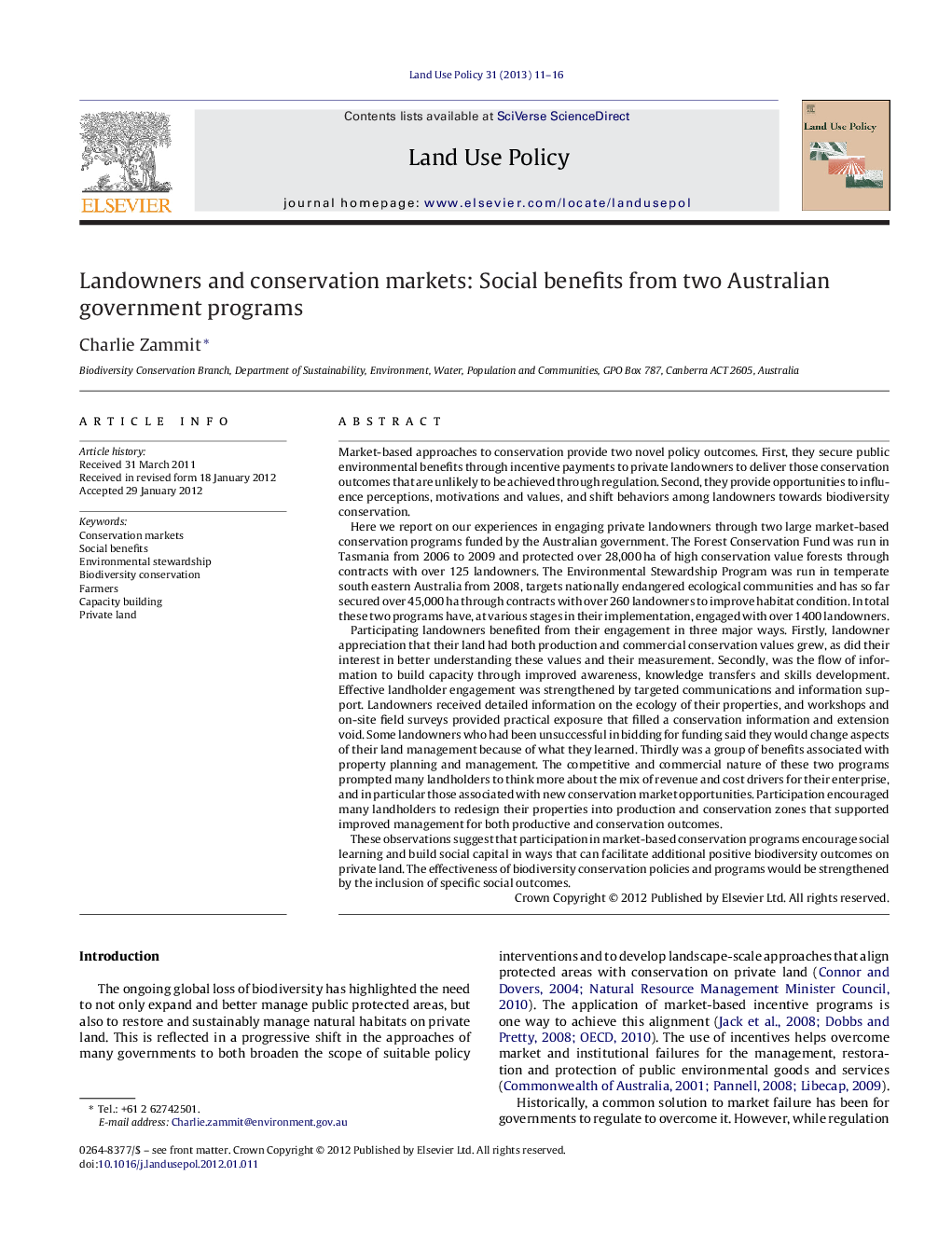| کد مقاله | کد نشریه | سال انتشار | مقاله انگلیسی | نسخه تمام متن |
|---|---|---|---|---|
| 93059 | 160112 | 2013 | 6 صفحه PDF | دانلود رایگان |
Market-based approaches to conservation provide two novel policy outcomes. First, they secure public environmental benefits through incentive payments to private landowners to deliver those conservation outcomes that are unlikely to be achieved through regulation. Second, they provide opportunities to influence perceptions, motivations and values, and shift behaviors among landowners towards biodiversity conservation.Here we report on our experiences in engaging private landowners through two large market-based conservation programs funded by the Australian government. The Forest Conservation Fund was run in Tasmania from 2006 to 2009 and protected over 28,000 ha of high conservation value forests through contracts with over 125 landowners. The Environmental Stewardship Program was run in temperate south eastern Australia from 2008, targets nationally endangered ecological communities and has so far secured over 45,000 ha through contracts with over 260 landowners to improve habitat condition. In total these two programs have, at various stages in their implementation, engaged with over 1400 landowners.Participating landowners benefited from their engagement in three major ways. Firstly, landowner appreciation that their land had both production and commercial conservation values grew, as did their interest in better understanding these values and their measurement. Secondly, was the flow of information to build capacity through improved awareness, knowledge transfers and skills development. Effective landholder engagement was strengthened by targeted communications and information support. Landowners received detailed information on the ecology of their properties, and workshops and on-site field surveys provided practical exposure that filled a conservation information and extension void. Some landowners who had been unsuccessful in bidding for funding said they would change aspects of their land management because of what they learned. Thirdly was a group of benefits associated with property planning and management. The competitive and commercial nature of these two programs prompted many landholders to think more about the mix of revenue and cost drivers for their enterprise, and in particular those associated with new conservation market opportunities. Participation encouraged many landholders to redesign their properties into production and conservation zones that supported improved management for both productive and conservation outcomes.These observations suggest that participation in market-based conservation programs encourage social learning and build social capital in ways that can facilitate additional positive biodiversity outcomes on private land. The effectiveness of biodiversity conservation policies and programs would be strengthened by the inclusion of specific social outcomes.
► About 1400 landowners participated in two Australian conservation markets.
► Over 73,000 ha of high conservation habitat was protected under 385 contracts.
► Social benefits included knowledge transfers, capacity building and farm planning.
► Social benefits of conservation markets are poorly understood.
► Researching social benefits of conservation markets can inform conservation policy.
Journal: Land Use Policy - Volume 31, March 2013, Pages 11–16
